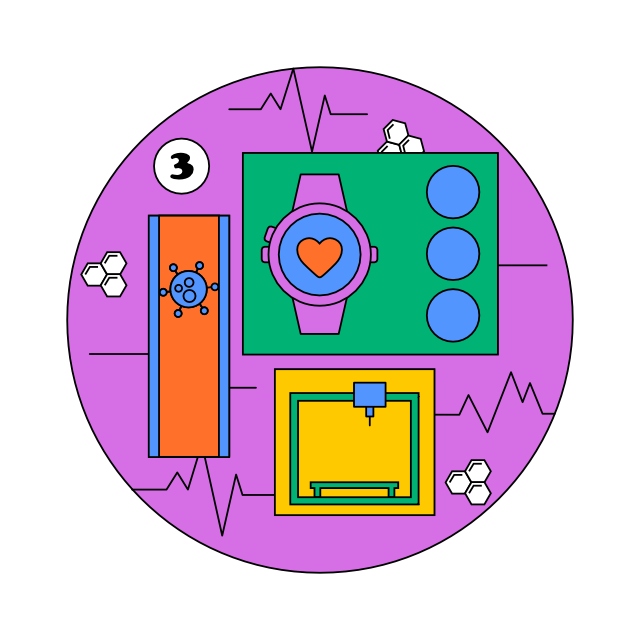SDG 3Good health and well-being
Artificial intelligence in the service of medicine. Where can technology replace doctors?
Overview
Thanks to technology, medicine is already tackling seemingly impossible challenges in the Western world. But in many parts of the world, healthcare is neglected, inadequate, or poorly funded. There is a need for increased prevention, support for overworked health professionals and more efficient healthcare financing. While Europe and the United States focus particularly on prevention, artificial intelligence, and nanotechnology, the situation is very different in African countries. But even there, technology can help. Telemedicine, for example, helped during the Ebola and Covid-19 epidemics.
Solution and Key Innovations
Artificial intelligence for the use in healthcare is being developed in a multifaceted way and is – or will be – able to help tackle many problems. Apps can help with physical and mental illness prevention; AI can establish a diagnosis in hospitals and – through humanoids – it can help the disabled. All of this will save people time, money, energy and, most importantly, improve their health.
Doctors use artificial intelligence detection systems, for example, to detect cancer. The first one in Europe was carried out at a hospital in Cambridge, UK, in 2020. The Microsoft Research Cambridge research centre created Project InnerEye, which stores all available hospital data and is able to make a diagnosis with 99% accuracy, reducing the time needed to investigate and prepare treatment by 90%.1
Nanotechnology is a key discovery for medicine. Scientists are creating DNA-based nanobots that deliver medicine to specific areas of the body to heal directly in damaged cells, clean clogged veins or destroy cancer cells. Researchers at the Harvard Medical School in the UK have made a nanorobot out of DNA that transports molecules containing instructions that force cells to change or adjust their function in the desired direction.
The Czech Republic is gradually becoming a hotspot for nanotechnology research and development. Scientists can create artificial organs and tissues using 3D printing. The major medical technology research centres are the CEITEC and Nanopharma.
Due to the Covid-19 pandemic, the use of telemedicine has rapidly increased. Doctors do not need to see patients in person; they can connect via a webcam. This will make it possible to be examined more quickly, more efficiently and over a much wider geographical range. London-based Babylon Health aims to provide accessible health services for everyone on the planet. Chatbots help patients to self-diagnose. The UK company CEPEH is researching their development and involvement in medical education.
Patients with reduced mobility are helped by digital neurotherapy. The Swiss-American start-up MindMaze is developing a human-machine interface to help patients with neural recovery – they use virtual reality programmes for rehabilitation.
In Africa, technology is being used to fight the mosquito borne Zika virus. The Swiss company WeRobotics has developed autonomous drones that release millions of sterile male mosquitoes over areas where mosquito-borne diseases are endemic. As a result, the population of disease-carrying mosquitoes is rapidly declining.
Key Questions
- How can technology help improve the quality of life and health?
- Can technology extend aid opportunities even to poor areas?
- Is it even desirable to repair and change human bodies by technology?
Key Words
Artificial intelligence, nanotechnologies, nanobots, telemedicine, neurotherapy
Interesting Resources
- The CzechNanoLab research centre’s cutting edge nanotechnology research
- AI potential in medicine
- Children born without a hand are being aided by 3D-printed prosthetics
- Is telemedicine the future of healthcare?
- Technology helping in developing countries
- Companies working with AI in healthcare
- MindMaze-aided neurotherapy
- 3D-printed hand prototype
